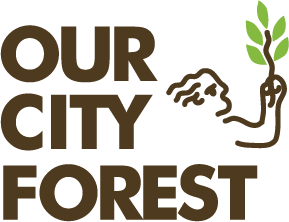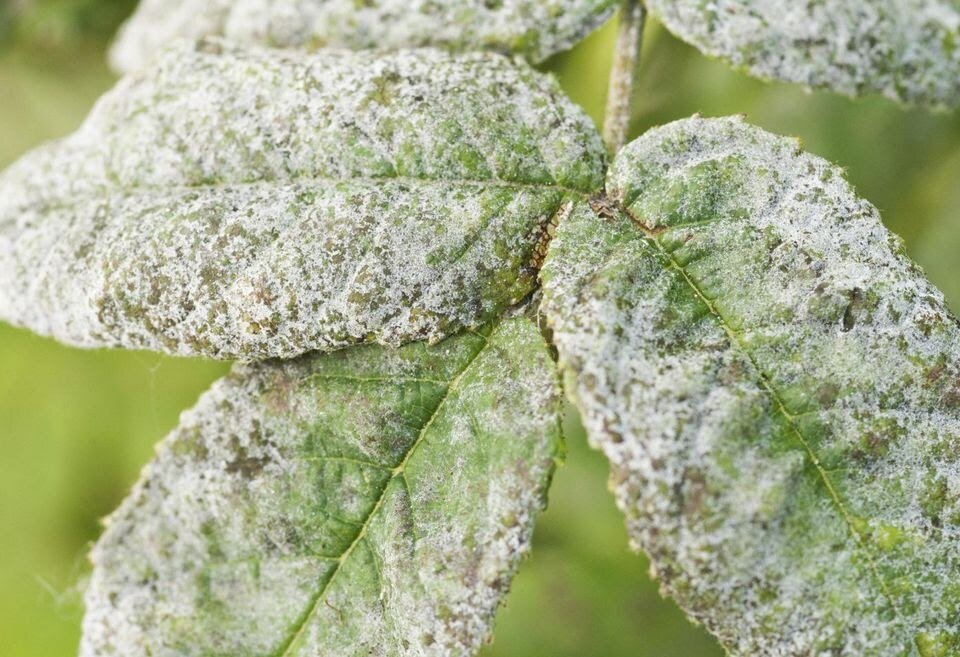There are a lot of reasons that could lead to the decline or death of a tree. From insects to disease and fungi to lawn mowers and everything in between, the trees of our urban forest are constantly at threat. Identification and diagnosis of the decline of trees can be crucial in warding off a mass urban forest devastation, those of the like seen with Emerald Ash Borer, Gypsy Moth, and Dutch Elm Disease.
There are two types of indicators that can lead you to knowing that a tree is under stress. Symptoms are effects that the causal agent has on a tree, whereas signs are what is left behind by the causal agent. An example of a symptom would be wilting of the leaves due to lack of water. An example of a sign is a fruiting body of a fungi of insect burrow holes.
Some common signs and symptoms include:
Leaf Spot- Spots of dead tissue on foliage: size, shape, color depends on causal agent
Leaf Blotch- Dead areas on leaves on foliage: larger than leaf spots.
Scorch- Browning and death of areas along leaf margins & between veins.
Canker- Localized dead stem tissue.
Stunting - Abnormally small plant growth.
Gummosis - Exudation of sap or gum from wounds.
Rust- Orange/reddish brown pustules on leaves.
Gall- Swollen plant tissue.
Chlorosis- Yellowing of green leaves due to lack of chlorophyll.
Necrosis- Death of tissue.
Die Back- Dead portions of the tree. (commonly seen on tips)
Powdery Mildew- White or greyish fungal growth on the surface of the leaves
Vascular Discoloration- Darkening of wood vascular elements, often along growth rings.
Witch's broom- Abnormal development of multiple shoots.
Noticing these things can help save a tree from death or prolonged injury. If you see any of these signs or symptoms on a tree, you can do some research and try to identify the causal agent yourself. You can also reach out to an arborist and see if they would be able to identify the causal agent, and provide a recommendation as to how to pursue the tree.
Biotic factors such as insects, disease and fungi are considered infectious, whereas abiotic factors such as moisture and temperature extremes, mineral deficiency, pollution, climate change etc are not considered infectious. Fungi and insects make up the largest portions of biotic factors. Insects are classified into three categories when it comes to effecting trees. Chewing insects that use their mouthparts to eat portions of the tree, usually the leafs (i.e Japanese beetles, gypsy moths and tent caterpillars). Sucking insects that use their straw like mouth parts to suck sugars out of portions of the tree, usually stems and leaves (i.e. aphids and scales). Lastly boring insects, who bore into the tree and either eat portions of the inner bark or create nests there; these insects cause the most damage to trees (i.e. Emerald Ash Borer, and bark beetles).
Some Insects in the Bay area Include:
Aphids - Small sucking insects that attach to stems and suck out juices and excrete a sticky chemical called frass. More info.
California Oakworm - Caterpillars that skeletonize oak trees, predominantly coast live oaks. More info.
Lace bugs - black shiny insects much like aphids, remove nutrients from leaves that cause white splotching. More info.
Tussock Moth - caterpillars with large appetites can defoliate trees quickly. Affects all species. More info.
Western Tussock Moth Eggs Source:
(https://www.sacnaturecenter.net/visit-us/nature-blog/news.html?NewsID=60340)
Western Tussock Moth Larvae Source:
(https://www.thedailygarden.us/garden-word-of-the-day/western-tussock-moth)
When it comes to disease, fungi and viruses there are three very important factors to think about, the host, the pathogen, and the environment that make up the disease triangle. The host is identified as the plant that is in question; the pathogen would be the disease, fungi or virus; and the environment would be all the factors that affect both pathogen and host.
Most trees are susceptible to at least one disease causing fungi, yet most fungi are actually good. Only a small portion of fungi are harmful to trees and other plants. Diseases can be carried by vectors, most commonly insects, this is seen in dutch elm disease where the bark beetle works as a vector. A common bay area disease, fireblight can be spread by bees (this doesn't make bees bad though).
Here are some common bay area diseases:
Chinese Elm Anthracnose - Dye back on tips, black spots on leaves and cankers form at the base of the tree. More info.
Fireblight - very contagious bacteria disease, causes a burned look on stems, leaves and branches. Mostly affects pears and apples. More info.
Powdery Mildew - White fungi that forms on leaves of plants. More info.
Shot Hole Fungus - Causes holes and browning of leaves, as well as yellowing of stems. Affects Prunus species - including stone fruit and almond trees. More info.
Sooty Mold - furry black mold on leaves, and yellowing of leaves. Common on fruit trees and attracts aphids. More info.
Sudden Oak Death - Caused by the water mold pathogen Phytophthora signs include cankers, twig by back and black/brown leaf spots. More info.
Sycamore Anthracnose - erratic branching, cankers, dieback, and defoliation. Fungal disease that affects most sycamores and maple trees. More info.
Powdery Mildew Source:
(https://www.thespruce.com/powdery-mildew-1402500)
If you have any questions or concerns about a tree on your property you can reach out to a local arborist and see if they can provide some help. Sometimes solutions are simple, like a spray or soil injection. Other times they are extreme like with Oak Wilt where the tree has to be removed, chipped, chips hauled to a site where there are no oaks present and dumped, 4 ft trench created severing all roots, stump ground down two feet, and soil not wood chips placed on top, and the entire area painted with pruning sealing paint. This fungi is not present in California luckily.
I have compiled a set of extra readings and field guides for those more interested in the topic of insects and disease, specifically in California. Here is a good link to some of the most common harmful insects to trees in the United States for more reading. Also here is an identification key for California insects. Here is a field guide for diseases and insects for California oaks. Here is a more in depth training manual for insects and disease by the US Forest Service in California.

















